 Physical and physiological impacts of ocean warming alter phenotypic selection on sperm morphology.
Physical and physiological impacts of ocean warming alter phenotypic selection on sperm morphology.
Chirgwin, E., Marshall, D.J., Monro, K. 2020. Physical and physiological impacts of ocean warming alter phenotypic selection on sperm morphology. Functional Ecology. doi:10.1111/1365-2435.13483

A note on simulating null distributions for G matrix comparisons.
Morrissey, M. B., Hangartner, S., Monro, K. 2019. A note on simulating null distributions for G matrix comparisons. Evolution. doi:10.1111/evo.13842
Hangartner, S., Lasne, C., Sgrò, C.M., Connallon, T. and Monro, K. 2020. Genetic covariances promote climatic adaptation in Australian Drosophila. Evolution. doi:10.1111/evo.13831
 Legs of male fiddler crabs evolved to compensate for claw exaggeration and enhance claw functionality during waving displays.
Legs of male fiddler crabs evolved to compensate for claw exaggeration and enhance claw functionality during waving displays.
Bywater, C.L., Wilson, R.S., Monro, K., White, C.R. 2018. Legs of male fiddler crabs evolved to compensate for claw exaggeration and enhance claw functionality during waving displays. Evolution. doi:10.1111/evo.13617

How does parental environment influence the potential for adaptation to global change?
Chirgwin, E., Marshall, D. J., Sgrò, C. M., and Monro, K. 2018. How does parental environment influence the potential for adaptation to global change? Proceedings of the Royal Society B: Biological Sciences 285, 20181374.
 Biochemical evolution in response to intensive harvesting in algae: evolution of quality and quantity.
Biochemical evolution in response to intensive harvesting in algae: evolution of quality and quantity.
Marshall, D. J., Lawton, R. J., Monro, K., and Paul, N. A. 2018. Biochemical evolution in response to intensive harvesting in algae: evolution of quality and quantity. Evolutionary Applications 8, 1389-1400. Doi.org/10.1111/eva.12632
 Resources mediate selection on module longevity in the field.
Resources mediate selection on module longevity in the field.
Svanfeldt, K., Monro, K., and Marshall, D. J. 2018. Resources mediate selection on module longevity in the field. Journal of Evolutionary Biology 31, 1666-1674. Doi:10.1111/jeb.13362
 Genotypic covariance between the performance of a resident species and community assembly in the field.
Genotypic covariance between the performance of a resident species and community assembly in the field.
Riedel, A.M., Monro, K., Blows, M.W. and Marshall, D.J. 2018. Genotypic covariance between the performance of a resident species and community assembly in the field. Functional Ecology 32, 533-544. Doi: 10.1111/1365-2435.13005
 Should mothers provision their offspring equally? A manipulative field test
Should mothers provision their offspring equally? A manipulative field test
Cameron, H., Monro, K. & Marshall, D. J. 2017. Should mothers provision their offspring equally? A manipulative field test. Ecology Letters 20, 1025-1033. Doi: 10.1111/ele.12800
 Relaxation of herbivore-mediated selection drives the evolution of genetic covariances between plant competitive and defense traits.
Relaxation of herbivore-mediated selection drives the evolution of genetic covariances between plant competitive and defense traits.
Uesugi, A., Connallon, T., Kessler, A. & Monro, K. 2017. Relaxation of herbivore-mediated selection drives the evolution of genetic covariances between plant competitive and defense traits. Evolution 71, 1700-1709. Doi: 10.1111/evo.13247
 Field manipulations of resources mediate the transition from intraspecific competition to facilitation.
Field manipulations of resources mediate the transition from intraspecific competition to facilitation.
Svanfeldt, K., Monro, K., and Marshall, D.J. 2017. Field manipulations of resources mediate the transition from intraspecific competition to facilitation. Journal of Animal Ecology 86, 654-661. Doi: 10.1111/1365-2656.12644.
 Limited evolutionary responses to harvest regime in the intensive production of algae.
Limited evolutionary responses to harvest regime in the intensive production of algae.
Lawton, R.J., Paul, N.A., Marshall, D.J., and Monro, K. 2017. Limited evolutionary responses to harvest regime in the intensive production of algae. Journal of Applied Phycology 29, 1449-1459. Doi:10.1007/s10811-016-1044-8.
 The other 96%: can neglected sources of fitness variation offer new insights into adaptation to global change?
The other 96%: can neglected sources of fitness variation offer new insights into adaptation to global change?
Chirgwin, E., Marshall, D.J., Sgrò, C.M., and Monro, K. 2017. The other 96%: can neglected sources of fitness variation offer new insights into adaptation to global change? Evolutionary Applications 10, 267-275. Doi:10.1111/eva.12447.
 Dispersal duration mediates selection on offspring size
Dispersal duration mediates selection on offspring size
Svanfeldt, K., Monro, K., and Marshall, D.J. 2017. Dispersal duration mediates selection on offspring size. Oikos 126, 480-487. Doi: 10.1111/oik.03604.
 Why do larger mothers produce larger offspring?
Why do larger mothers produce larger offspring?
Cameron, H., Monro, K., Malerba, M., Munch, S.B., and Marshall, D.J. 2016. Why do larger mothers produce larger offspring? A test of classic theory. Ecology 97, 3452-3459. Doi: 10.1002/ecy.1590.
 Environment-dependent variation in selection on life history across small spatial scales.
Environment-dependent variation in selection on life history across small spatial scales.
Lange, R., Monro, K., and Marshall, D.J. 2016. Environment-dependent variation in selection on life history across small spatial scales. Evolution 70, 2404-2410. doi:10.1111/evo.13033
 Unravelling anisogamy: egg size and ejaculate size mediate selection on morphology in free-swimming sperm.
Unravelling anisogamy: egg size and ejaculate size mediate selection on morphology in free-swimming sperm.
Monro, K., and Marshall, D.J. 2016. Unravelling anisogamy: egg size and ejaculate size mediate selection on morphology in free-swimming sperm. Proceedings of the Royal Society B: Biological Sciences 283, 20160671. doi: 10.1098/rspb.2016.0671.
 Transgenerational plasticity and environmental stress: do paternal effects act as a conduit or a buffer?
Transgenerational plasticity and environmental stress: do paternal effects act as a conduit or a buffer?
Guillaume, A.S., Monro, K., and Marshall, D.J. 2016. Transgenerational plasticity and environmental stress: do paternal effects act as a conduit or a buffer? Functional Ecology, 30, 1175-1184. Doi: 10.1111/1365-2435.12604.
Revealing hidden evolutionary capacity to cope with global change.
Chirgwin, E., Monro, K., Sgrò, C. M. & Marshall, D. J. 2015. Revealing hidden evolutionary capacity to cope with global change. Global Change Biology, 21, 3356–3366. Doi: 10.1111/gcb.12929.
The biogeography of fertilisation mode in the sea.
Monro, K. & Marshall, D. J. 2015. The biogeography of fertilisation mode in the sea. Global Ecology and Biogeography, 24, 1499-1509. Doi: 10.1111/geb.12358.
Non-contact competition in a sessile marine invertebrate: causes and consequences.
Thompson, M., Marshall, D. & Monro, K. 2015. Non-contact competition in a sessile marine invertebrate: causes and consequences. Marine Ecology Progress Series, 522, 115-125. Doi: 10.3354/meps11178.
 Faster is not always better: selection on growth rate fluctuates across life history and environments.
Faster is not always better: selection on growth rate fluctuates across life history and environments.
Monro, K. & Marshall, D. J. 2014a. Faster is not always better: selection on growth rate fluctuates across life history and environments. The American Naturalist, 183, 798-809. Doi: 10.1086/676006.
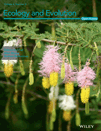
Two sexes, one body: intra- and intersex covariation of gamete phenotypes in simultaneous hermaphrodites.
Monro, K. & Marshall, D. J. 2014b. Two sexes, one body: intra- and intersex covariation of gamete phenotypes in simultaneous hermaphrodites. Ecology and Evolution, 4, 1340-1346. Doi: 10.1002/ece3.1035.
 Relative influence of resident species and environmental variation on community assembly.
Relative influence of resident species and environmental variation on community assembly.
Riedel, A., Monro, K., Blows, M. W. & Marshall, D. J. 2014. Relative influence of resident species and environmental variation on community assembly. Marine Ecology Progress Series, 499, 103-113. Doi: 10.3354/meps10695
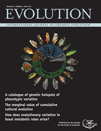 The maintenance of sperm variability: context-dependent selection on sperm morphology in a broadcast spawning invertebrate.
The maintenance of sperm variability: context-dependent selection on sperm morphology in a broadcast spawning invertebrate.
Johnson, D. W., Monro, K. & Marshall, D. J. 2013. The maintenance of sperm variability: context-dependent selection on sperm morphology in a broadcast spawning invertebrate. Evolution, 67, 1383-1395. Doi: 10.1111/evo.12022.
Interspecific competition alters nonlinear selection on offspring size in the field.
Marshall, D. J. & Monro, K. 2013. Interspecific competition alters nonlinear selection on offspring size in the field. Evolution, 67, 328-337. Doi: 10.1111/j.1558-5646.2012.01749.x.
 Evolutionary constraints and the maintenance of individual specialization throughout succession.
Evolutionary constraints and the maintenance of individual specialization throughout succession.
Monro, K. & Marshall, D. J. 2013. Evolutionary constraints and the maintenance of individual specialization throughout succession. Evolution, 67, 3636–3644. Doi: 10.1111/evo.12220.

Predicting evolutionary responses to climate change in the sea.
Munday, P. L., Warner, R. R., Monro, K., Pandolfi, J. M. & Marshall, D. J. 2013. Predicting evolutionary responses to climate change in the sea. Ecology Letters, 16, 1488-1500. Doi: 10.1111/ele.12185.
 Invasive ecosystem engineer selects for different phenotypes of an associated native species.
Invasive ecosystem engineer selects for different phenotypes of an associated native species.
Wright, J. T., Gribben, P. E., Byers, J. E. & Monro, K. 2012. Invasive ecosystem engineer selects for different phenotypes of an associated native species. Ecology, 93, 1262-1268. Doi: 10.1890/11-1740.1.
Fitness consequences of larval traits persist across the metamorphic boundary.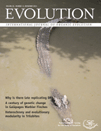
Crean, A. J., Monro, K. & Marshall, D. J. 2011. Fitness consequences of larval traits persist across the metamorphic boundary. Evolution, 65, 3079-3089. Doi: 10.1111/j.1558-5646.2011.01372.x.
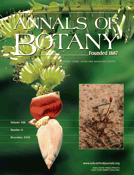
The adaptive value of functional and life-history traits across fertility treatments in an annual plant.
Bonser, S. P., Ladd, B., Monro, K., Hall, M. D. & Forster, M. A. 2010. The adaptive value of functional and life-history traits across fertility treatments in an annual plant. Annals of Botany, 106, 979-988. Doi: 10.1093/aob/mcq195.
Responses to conspecific density in an arborescent bryozoan.
Gooley, T. A., Marshall, D. J. & Monro, K. 2010. Responses to conspecific density in an arborescent bryozoan. Marine Ecology Progress Series, 415, 83-90. Doi: 10.3354/meps08757.
Phenotype-environment mismatches reduce connectivity in the sea.
Marshall, D. J., Monro, K., Bode, M., Keough, M. J. & Swearer, S. 2010. Phenotype-environment mismatches reduce connectivity in the sea. Ecology Letters, 13, 128-140. Doi: 10.1111/j.1461-0248.2009.01408.x.
 Selection on offspring size among environments: the roles of environmental quality and variability.
Selection on offspring size among environments: the roles of environmental quality and variability.
Monro, K., Sinclair-Taylor, T. & Marshall, D. J. 2010. Selection on offspring size among environments: the roles of environmental quality and variability. Functional Ecology, 24, 676-684. Doi: 10.1111/j.1365-2435.2009.01665.x.
The evolvability of growth form in a clonal seaweed.
Monro, K. & Poore, A. G. B. 2009a. The evolvability of growth form in a clonal seaweed. Evolution, 63, 3147-3157. Doi: 10.1111/j.1558-5646.2009.00802.x.
Performance benefits of growth-form plasticity in a clonal red seaweed.
Monro, K. & Poore, A. G. B. 2009b. Performance benefits of growth-form plasticity in a clonal red seaweed. Biological Journal of the Linnean Society, 97, 80-89. Doi: 10.1111/j.1095-8312.2008.01186.x.

The potential for evolutionary responses to cell-lineage selection on growth form and its plasticity in a red seaweed.
Monro, K. & Poore, A. G. B. 2009c. The potential for evolutionary responses to cell-lineage selection on growth form and its plasticity in a red seaweed. The American Naturalist, 173, 151-163. Doi: 10.1086/595758.
 Multivariate selection shapes environment-dependent variation in the clonal morphology of a red seaweed.
Multivariate selection shapes environment-dependent variation in the clonal morphology of a red seaweed.
Monro, K., Poore, A. G. B. & Brooks, R. 2007. Multivariate selection shapes environment-dependent variation in the clonal morphology of a red seaweed. Evolutionary Ecology, 21, 765-782. Doi: 10.1007/s10682-006-9150-8.
Light quantity and quality induce shade-avoiding plasticity in a marine macroalga.
Monro, K. & Poore, A. G. B. 2005. Light quantity and quality induce shade-avoiding plasticity in a marine macroalga. Journal of Evolutionary Biology, 18, 426-435. Doi: 10.1111/j.1420-9101.2004.00826.x.
 Selection in modular organisms: is intraclonal variation in macroalgae evolutionarily important?
Selection in modular organisms: is intraclonal variation in macroalgae evolutionarily important?
Monro, K. & Poore, A. G. B. 2004. Selection in modular organisms: is intraclonal variation in macroalgae evolutionarily important? The American Naturalist, 163, 564-578. Doi: 10.1086/382551
 Physical and physiological impacts of ocean warming alter phenotypic selection on sperm morphology.
Physical and physiological impacts of ocean warming alter phenotypic selection on sperm morphology.

 Resources mediate selection on module longevity in the field.
Resources mediate selection on module longevity in the field. Should mothers provision their offspring equally? A manipulative field test
Should mothers provision their offspring equally? A manipulative field test Limited evolutionary responses to harvest regime in the intensive production of algae.
Limited evolutionary responses to harvest regime in the intensive production of algae. Dispersal duration mediates selection on offspring size
Dispersal duration mediates selection on offspring size Why do larger mothers produce larger offspring?
Why do larger mothers produce larger offspring? Environment-dependent variation in selection on life history across small spatial scales.
Environment-dependent variation in selection on life history across small spatial scales. Transgenerational plasticity and environmental stress: do paternal effects act as a conduit or a buffer?
Transgenerational plasticity and environmental stress: do paternal effects act as a conduit or a buffer?


 Faster is not always better: selection on growth rate fluctuates across life history and environments.
Faster is not always better: selection on growth rate fluctuates across life history and environments. Relative influence of resident species and environmental variation on community assembly.
Relative influence of resident species and environmental variation on community assembly. The maintenance of sperm variability: context-dependent selection on sperm morphology in a broadcast spawning invertebrate.
The maintenance of sperm variability: context-dependent selection on sperm morphology in a broadcast spawning invertebrate.
 Evolutionary constraints and the maintenance of individual specialization throughout succession.
Evolutionary constraints and the maintenance of individual specialization throughout succession. Invasive ecosystem engineer selects for different phenotypes of an associated native species.
Invasive ecosystem engineer selects for different phenotypes of an associated native species.


 Selection on offspring size among environments: the roles of environmental quality and variability.
Selection on offspring size among environments: the roles of environmental quality and variability.

 Multivariate selection shapes environment-dependent variation in the clonal morphology of a red seaweed.
Multivariate selection shapes environment-dependent variation in the clonal morphology of a red seaweed.
 Selection in modular organisms: is intraclonal variation in macroalgae evolutionarily important?
Selection in modular organisms: is intraclonal variation in macroalgae evolutionarily important?
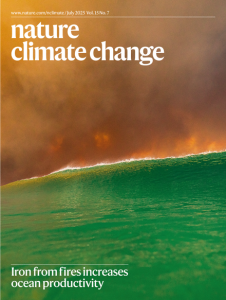 Marine heatwaves select for thermal tolerance in a reef-building coral.
Marine heatwaves select for thermal tolerance in a reef-building coral.
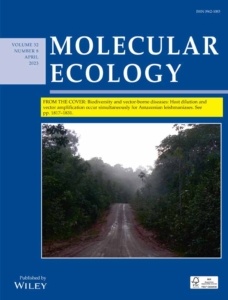 Climate adaptation and vulnerability of foundation species in a global change hotspot.
Climate adaptation and vulnerability of foundation species in a global change hotspot. Evolution of “invasion syndrome” in invasive goldenrod is not constrained by genetic trade-offs.
Evolution of “invasion syndrome” in invasive goldenrod is not constrained by genetic trade-offs. Environmental effects on genetic variance are likely to constrain adaptation in novel environments.
Environmental effects on genetic variance are likely to constrain adaptation in novel environments. Temperature and nutrition do not interact to shape the evolution of metabolic rate.
Temperature and nutrition do not interact to shape the evolution of metabolic rate.  Exome-informed formulations of food proteins enhance body growth and feed efficiency in ad libitum-fed mice.
Exome-informed formulations of food proteins enhance body growth and feed efficiency in ad libitum-fed mice. Benefits of outcrossing and their implications for genetic management of an endangered species with mixed-mating system.
Benefits of outcrossing and their implications for genetic management of an endangered species with mixed-mating system. When is warmer better? Disentangling within- and between-generation effects of thermal history on early survival.
When is warmer better? Disentangling within- and between-generation effects of thermal history on early survival.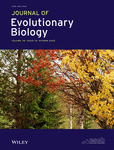 Within-population variation in body size plasticity in response to combined nutritional and thermal stress is partially independent from variation in development time.
Within-population variation in body size plasticity in response to combined nutritional and thermal stress is partially independent from variation in development time. Thermal performance curves reveal shifts in optima, limits, and breadth in early life.
Thermal performance curves reveal shifts in optima, limits, and breadth in early life.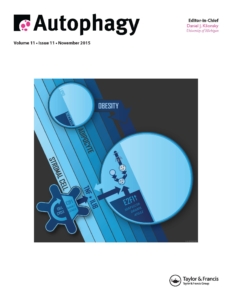 Metformin rescues muscle function in BAG3 myofibrillar myopathy models.
Metformin rescues muscle function in BAG3 myofibrillar myopathy models.
 Correlational selection on size and development time is inconsistent across early life stages.
Correlational selection on size and development time is inconsistent across early life stages. Constant and fluctuating temperature acclimations have similar effects on phenotypic plasticity in springtails.
Constant and fluctuating temperature acclimations have similar effects on phenotypic plasticity in springtails. Genetic covariances promote climatic adaptation in Australian Drosophila.
Genetic covariances promote climatic adaptation in Australian Drosophila. Legs of male fiddler crabs evolved to compensate for claw exaggeration and enhance claw functionality during waving displays.
Legs of male fiddler crabs evolved to compensate for claw exaggeration and enhance claw functionality during waving displays. Biochemical evolution in response to intensive harvesting in algae: evolution of quality and quantity.
Biochemical evolution in response to intensive harvesting in algae: evolution of quality and quantity. Genotypic covariance between the performance of a resident species and community assembly in the field.
Genotypic covariance between the performance of a resident species and community assembly in the field. Relaxation of herbivore-mediated selection drives the evolution of genetic covariances between plant competitive and defense traits.
Relaxation of herbivore-mediated selection drives the evolution of genetic covariances between plant competitive and defense traits. Field manipulations of resources mediate the transition from intraspecific competition to facilitation.
Field manipulations of resources mediate the transition from intraspecific competition to facilitation.  The other 96%: can neglected sources of fitness variation offer new insights into adaptation to global change?
The other 96%: can neglected sources of fitness variation offer new insights into adaptation to global change?


